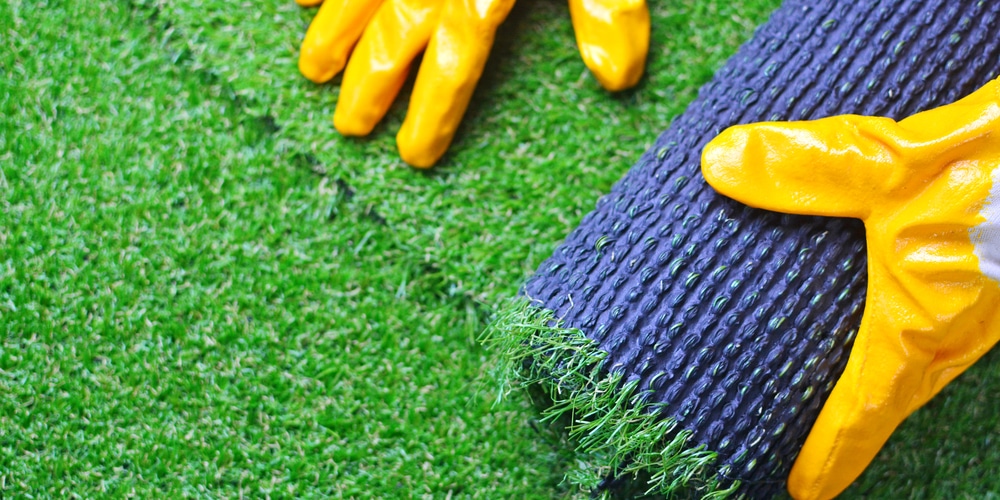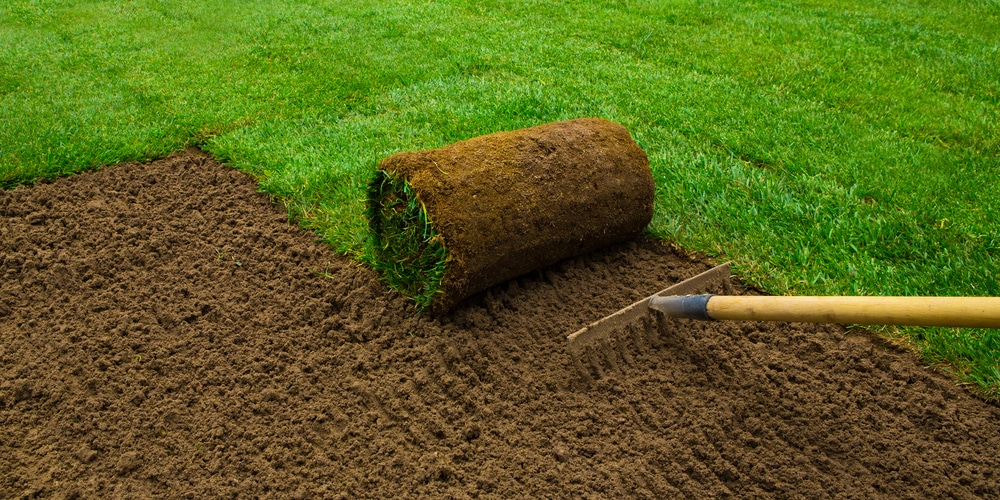Artificial grass is often used for stadiums and playing fields because it creates a good surface for playing soccer. Often homeowners consider laying artificial grass in their yard. If your kids are soccer-mad and your yard keeps ending up with holes and bare patches, you may be wondering whether to lay artificial grass vs. sod.
When making a choice between artificial grass vs. sod, there are many things to consider whether you plan to update your lawn or sports field. Let’s look at the differences between artificial grass vs. sod.
Artificial Grass vs. Sod
Choosing the best lawn or sports field surface can be difficult as both artificial grass and sod have their advantages and disadvantages. Here are some things to consider before making a choice.
The Cost of Installation
Many factors will influence the overall cost of installing artificial grass or sod. One of the main factors to consider is the size of the area you need to cover and the amount of materials you’ll need. If you choose to lay sod, you’ll also need to consider landscaping materials and drainage needs.
There may be some options to reduce the cost if you install artificial grass. You may be able to choose recycled grass. If you choose to install sod, it’s not wise to cut corners to try and save money. You’ll only be sacrificing quality if you try.
If you do decide to go with artificial grass, here’s how to install it.
Long-Term Maintenance
It’s also worth considering the long-term maintenance cost and time commitment when deciding on artificial grass vs. sod. If you choose natural grass, you’ll need to do jobs such as fertilizing, aerating, watering, and mowing regularly to ensure your grass remains in good condition. If you’re looking for natural grass for a soccer field, it’s best to choose a robust variety that can cope with wear and tear.
Artificial grass doesn’t require as much maintenance, but you will need to hose it down now and again to remove dirt from its surface. Artificial grass generally lasts for between eight and ten years as long as it’s cared for correctly.
Weeds aren’t really much a problem, since you don’t have to worry about whether or not you are killing the grass you can use anything to kill weeds in artificial grass.
Environmental Impact
You may also like to consider environmental factors when choosing artificial grass vs. sod. Sod may seem like the more obvious choice for protecting the environment as it reduces airborne pollutants and replenishes oxygen. However, natural grass does need a lot of water to keep it looking green and healthy. It’s also best to use organic fertilizers on your lawn rather than chemicals to reduce your environmental footprint.
Artificial grass doesn’t need much water. You do need to water it for cleaning purposes or to cool it down, but this option will reduce your water usage. If you choose artificial grass, you won’t need to use pesticides or fertilizers, which may affect the environment.
Health and Safety
Natural grass is beneficial as it won’t overheat and provides an even temperature, which is excellent for playing soccer and other sports. There are many disadvantages; many people have allergies to grass, and it can be hazardous if holes develop. Sod can also become a breeding ground for insects.
Artificial grass has a safety rating as it won’t cause allergies and is generally a safer surface to play soccer. Another advantage is that you don’t have to worry that overgrown grass will attract insects or even snakes. Dogs can’t dig up artificial grass, which is another plus.
Aesthetics
Natural grass takes a lot of care to look its best; it will also go through a dormant stage which means it may look brown in the winter. You may also find that your grass develops other issues such as fungal growth, muddy holes, or weeds. It can take time to repair a damaged lawn so that it looks its best. On the other hand, artificial grass will look green all year round and can be easily repaired in a couple of days if there are any issues.
Related: Muddy Yard Fix
Conclusion
Creating a sports field or lawn that’s going to be hard-wearing and attractive requires careful planning. Laying sod is an excellent option as it’s more natural and environmentally friendly as long as you only use organic fertilizers and pesticides.
Artificial grass is very easy to maintain and is good value for money. It’s essential to understand the differences between artificial grass vs. sod so that you can make the right decision for your needs.
Folks that read this article often read artificial grass vs concrete. While sod is a soft and natural choice, both artificial grass and concrete are unforgiving.

